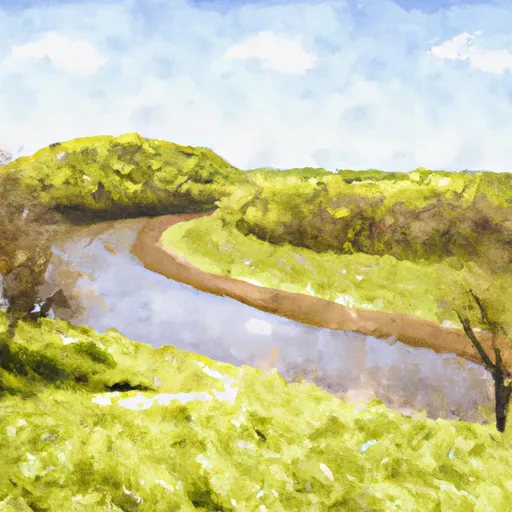2026-01-04T17:00:00-07:00
The National Weather Service in Denver has issued a Fire Weather Watch for wind and low relative humidity, which is in effect from Sunday morning through Sunday afternoon. * AFFECTED AREA...Fire Weather Zones 214, 216, 239, 240 and 241. * TIMING...From late Sunday morning through Sunday afternoon. * WINDS...West 10 to 20 mph with gusts 30 to 45 mph. * RELATIVE HUMIDITY...12 to 18%. * IMPACTS...Conditions will be favorable for rapid fire spread. Avoid outdoor burning and any activity that may produce a spark and start a wildfire.
Summary
Total streamflow across the
Wisconsin River
was last observed at
15,906
cfs, and is expected to yield approximately
31,549
acre-ft of water today; about 131%
of normal.
River levels are high.
Average streamflow for this time of year is
12,144 cfs,
with recent peaks last observed
on
2019-04-19 when daily discharge volume was observed at
190,510 cfs.
Maximum discharge along the river is currently at the
Wisconsin River At Muscoda
reporting a streamflow rate of 10,000 cfs.
However, the streamgauge with the highest stage along the river is the
Wisconsin River At Rothschild
with a gauge stage of 13.17 ft.
This river is monitored from 6 different streamgauging stations along the Wisconsin River, the highest being situated at an altitude of 1,582 ft, the
Wisconsin River @ Rainbow Lake Nr Lake Tomahawk.
River Details
| Last Updated | 2026-01-02 |
| Discharge Volume | 31,549 ACRE-FT |
| Streamflow |
15,906.0 cfs
-2979.0 cfs (-15.77%) |
| Percent of Normal | 130.98% |
| Maximum |
190,510.0 cfs
2019-04-19 |
| Seasonal Avg | 12,144 cfs |
River Streamflow Levels
| Streamgauge | Streamflow | Gauge Stage | 24hr Change (%) | % Normal | Minimum (cfs) | Maximum (cfs) | Air Temp | Elevation |
|---|---|---|---|---|---|---|---|---|
|
Wisconsin River @ Rainbow Lake Nr Lake Tomahawk
USGS 05391000 |
526 cfs | 1.74 ft | 2.14 | |||||
|
Wisconsin River At Merrill
USGS 05395000 |
1430 cfs | 4.38 ft | -6.54 | |||||
|
Wisconsin River At Rothschild
USGS 05398000 |
1790 cfs | 13.17 ft | -10.5 | |||||
|
Wisconsin River At Wisconsin Rapids
USGS 05400760 |
2160 cfs | 2.87 ft | -21.17 | |||||
|
Wisconsin River Near Wisconsin Dells
USGS 05404000 |
2840 cfs | 2.67 ft | -8.68 | |||||
|
Wisconsin River At Muscoda
USGS 05407000 |
10000 cfs | 2.88 ft | -17.36 |
Seasonal Discharge Comparison
Maximum Streamflow Discharge
Streamflow Elevation Profile
The Wisconsin River is a tributary of the Mississippi River in the U.S. state of Wisconsin. At approximately 430 miles (692 km) long, it is the state's longest river. The river's name, first recorded in 1673 by Jacques Marquette as "Meskousing", is rooted in the Algonquian languages used by the area's American Indian tribes, but its original meaning is obscure. French explorers who followed in the wake of Marquette later modified the name to "Ouisconsin", and so it appears on Guillaume de L'Isle's map (Paris, 1718). This was simplified to "Wisconsin" in the early 19th century before being applied to Wisconsin Territory and finally the state of Wisconsin.
The Wisconsin River originates in the forests of the North Woods Lake District of northern Wisconsin, in Lac Vieux Desert near the border of the Upper Peninsula of Michigan. It flows south across the glacial plain of central Wisconsin, passing through Wausau, Stevens Point, and Wisconsin Rapids. In southern Wisconsin it encounters the terminal moraine formed during the last ice age, where it forms the Dells of the Wisconsin River. North of Madison at Portage, the river turns to the west, flowing through Wisconsin's hilly Western Upland and joining the Mississippi approximately 3 miles (4.8 km) south of Prairie du Chien.
The highest waterfall on the river is Grandfather Falls in Lincoln County.

 Western Boundary Of Effigy Mounds National Monument To Boundary Of Effigy Mounds National Monument
Western Boundary Of Effigy Mounds National Monument To Boundary Of Effigy Mounds National Monument